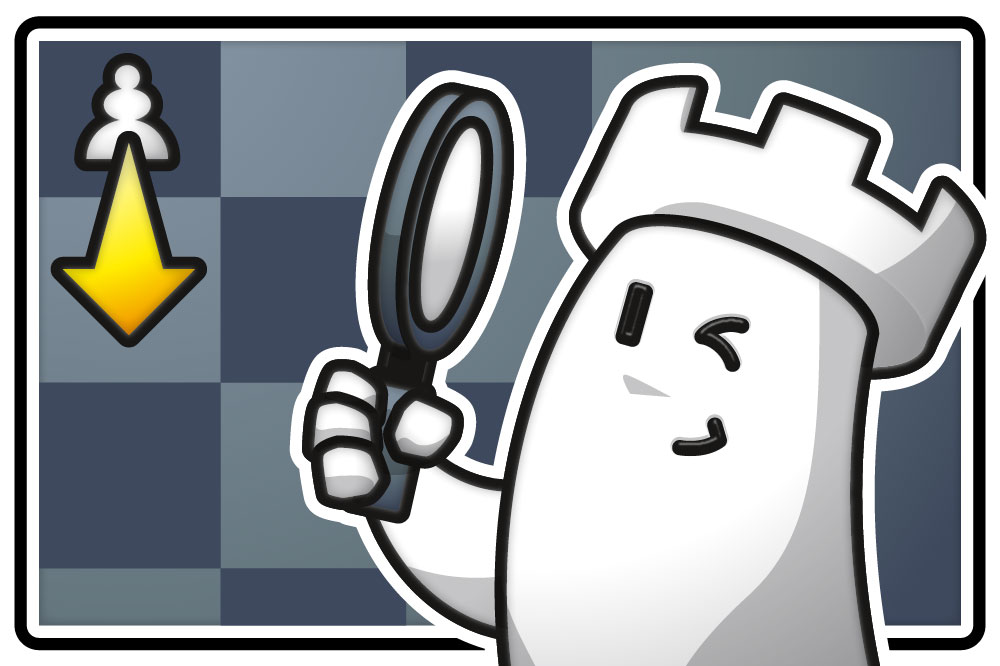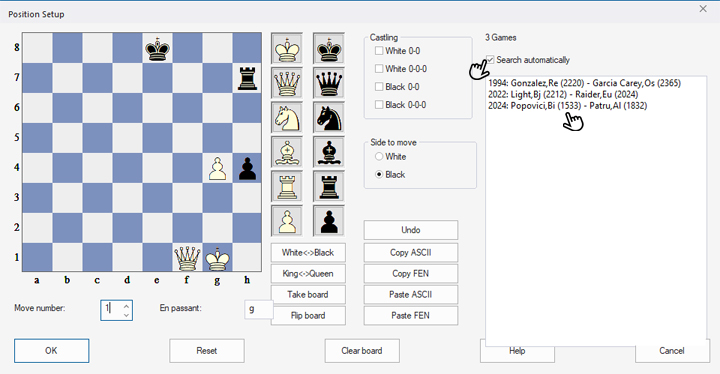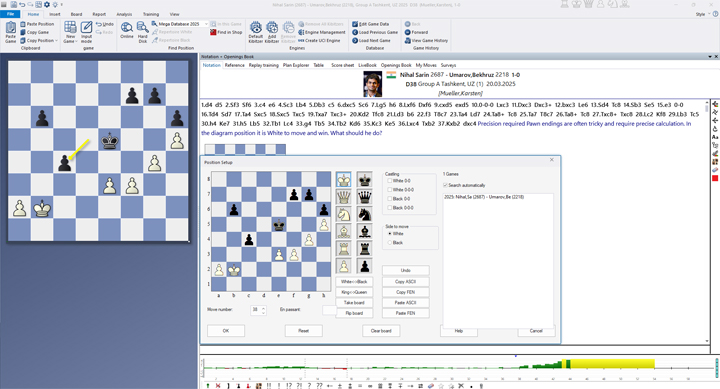


In the last part of this tutorial, which dealt with the “Position Setup” menu, we briefly mentioned the window on the right in the menu window:

Here, because the "Search automatically" checkbox is checked, you'll see a list of all games from the Mega Database 2025 in which these pieces appeared. This means that there may be other pieces on the board in the three games shown. See how you can use this option effectively in practice:
Suppose you came across this post in our news feed and wanted to investigate the pawn structure there:
If you now click on the download arrow at the bottom of the analysis window, a menu will open where you can click on “Download” or “Download & Copy - PGN”:

The game will then be saved in your download folder, and a window with the game will automatically open when ChessBase 18 is open.
In this new ChessBase window, press the “s” key as explained in the last part of this tutorial and the "Position Setup" menu will open, with the diagram position from the downloaded game:

The right column displays all games in the database (here: MegaDatabase 2025) in which this piece arrangement (possibly with additional pieces) appears—in fact, this specific arrangement has never existed before. Only this original game is displayed in the right window.
But in pawn endgames, the structures are often treated equally, so it's possible that this position has already existed with the kings on other squares. Fortunately, you don't have to try every possible position—simply remove the kings from the board, as explained in Tutorial 15:
You now see the pure pawn structure, and 18 games are displayed in the display window. If you click on a game once, you will see the first position from that game where the pawns are positioned as you were looking for:

Click the “Undo” button in the middle to return to your position.
Double-clicking on one of the games will open it in the game window. Using the "Undo" and "Redo" buttons in the main menu bar, you can jump back and forth between the selected game and the original game.
Now we hope you enjoy analysing your positions.
ChessBase has evolved over decades to become what it is today with its 18th version. The programme has countless options, which we will introduce here in small chunks – so you can customise your interface for everyday use and continually discover and learn new options to get the most out of ChessBase 18 and save time.
You can find more tips and hints on our support pages and FAQ pages.
All parts of the series:
Beginner's Tips Part 15: Setting up and analysing positions
Beginner's Tips Part 14: Save resources with remote engines
Beginner's Tips Part 13: Powerbooks and Powerbases
Beginner's Tips Part 12: Arrows and marks
Beginner's Tips Part 11: Multitasking with several windows
Beginner's Tips Part 10: "Standard Layout or Custom Layout"
Beginner's Tips Part 9: "Tactical Analysis"
Beginner's Tips Part 8: Putting Together What Belongs Together...!
Beginner's Tips Part 7: Organizing Your Database Correctly!
Beginner's Tips Part 6: Quick Command Bars and Variation Hierarchy
Beginner's Tips Part 5: Annotating
Beginner's Tips Part 4: Figurines and Colours
Beginner's Tips Part 3: Inserting Variations from References and the Engine
Beginner's Tips Part 2: Creating Variations and Activating the Engine
Beginner's Tips Part 1: Entering and Saving Your Own Games
| Advertising |